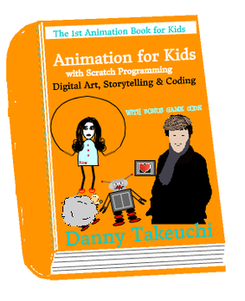Menu
Tech shorts for September 15, 2015: A Programming Book for Kids, and ad blocking catches on |

New book helps students learn how to program
Back in the 1960s, my father recommended that I take a typing class. At the time, I thought that was an odd suggestion, but I took my father's advice and have been glad I did ever since. Not everyone will make their living by developing or maintaining software. However, just as knowing how to touch type benefits people in many diverse walks of life, having a bit of programming experience will help many different categories of workers thrive in the future. Danny Takeuchi, a senior at Centennial High School in Boise, Idaho, has written Animation for Kids with Scratch Programming — Digital Art, Story Telling and Coding, which is intended to be easy enough for a nine-year-old to use. Clark Corbin describes Takeuchi's unique approach to programming instruction in a September 10, 2015, article on the IdahoEdNews.org site. Rather than focusing on tech terms and the standard STEM approach to programming instruction, Takeuchi emphasizes story telling and art, two concepts that youngsters are already familiar with. Watching my seven-year-old grandson blast through Minecraft makes me think that Scratch programming could be right up his virtual alley. And Takeuchi's instructional guide could be just the thing to help prepare him for whatever career he chooses. ----------------------------------------------------------------------------- Online advertisers feel the heat from increased use of ad blockers Some website owners claim that blocking ads is tantamount to stealing. Yet use of ad-blocking browser extensions continues to increase, particularly among gamers and other tech-savvy people who are among the eyeballs most coveted by advertisers. In a September 12, 2015, article, TechCrunch's Anthony Ha explains the quandary facing website owners, who are seeing their ad-based revenue decline by as much as 20 percent as a result of ad blocking. The advertisers admit that online ads are out of control: They block content and otherwise hinder our ability to view sites unimpeded by obnoxious animations and pop-ups. As I wrote in a post from April 7, 2015, the real problem with web ads isn't that they're annoying or that they threaten our privacy. It's that they have become a favorite medium for Internet crooks to deliver their malware payloads. Ha points out that there was never a time when people who use the Internet opted in to viewing ads -- they arrived after the fact. Online advertisers have devised ways to get their ads past the blockers, and sites have begun to block content until visitors who are using an ad-blocking extension disable the program. Rather than getting into a spy-vs.-spy battle with their ad-blocking visitors, site owners would be better off working with their customers on "acceptable ads" such as those proposed by the makers of the popular AdBlock Plus extension. The best solution would be to offer micropayment subscriptions to people who prefer to pay up front for web content minus the ads, and to serve up ad-laden versions of their pages for the folks who eschew the subscription model. As a rough estimate, would you be willing to pay a half-penny for each page you viewed for more than two or three seconds? I can spend all day working on the web and not open more than 100 pages total. That's about 50 cents a day, or $15 a month for an ad-free web experience. (In fact, the half-penny-per-page figure is probably more than site owners generate from each page view at present. The actual figure is probably closer to one-fifth of a penny per page view. This would reduce the ad-free fee to about 20 cents a day, or $6 a month.) So keep blocking those ads, and if you start to feel sorry for the revenue you're costing the sites you frequent, remember that they're the ones who made this mess, and they're the only ones who can clean it up. |
